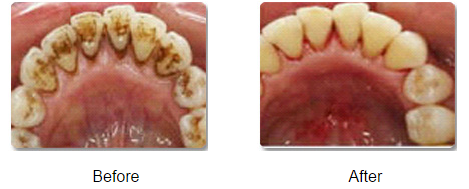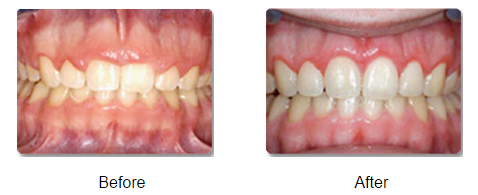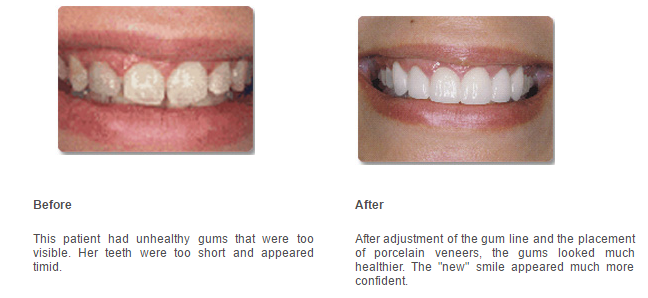Diseases which involve gum and supporting structure of teeth are the leading causes of tooth loss at early age.
Early detection and treatment of gum disease makes it possible for most people to retain their teeth for life time.
Tartar and plaque should be removed from tooth structure usually within every 6 months.
Gum treatments can be achieved through a number of procedures depending on extent of the problem. They include
- Professional dental cleanings (dental prophylaxis)
- Root planning
- Curettage
- Crown lengthening
- Gingival flap surgery
- Gingivectomy and gingivoplasty
- Soft tissue grafting.
Professional dental cleanings (dental prophylaxis) are usually performed by Registered Dental Hygienists. Your cleaning appointment will include a dental exam and the following:
Removal of calculus (tartar): Calculus is hardened plaque that has been left on the tooth for some time and is now firmly attached to the tooth surface. Calculus forms above and below the gum line and can only be removed with special dental instruments.
Removal of plaque: Plaque is a sticky, almost invisible film that forms on the teeth. It is a growing colony of living bacteria, food debris, and saliva. The bacteria produce toxins (poisons) that inflame the gums. This inflammation is the start of periodontal disease!
Teeth polishing: Remove stain and plaque that is not otherwise removed during tooth brushing and scaling.

Gingivectomy and gingivoplasty
Gingivectomy is a form of gum surgery. It is best described as the surgical removal of gingiva. Healthy gums are an important part of a person's general oral hygiene and appearance. Sometimes in certain people the gums can grow and build up over the front surface of a tooth. This formation of extra gum can change the balance between the length of the teeth and the height of the gum line leading in some cases to a person having a bad smile.
A gingivectomy is a type of minor surgery that involves the removal of a small amount of gum tissue around a tooth or teeth. A gingivectomy can be performed to correct a poor smile or maybe needed to be done to remove a diseased tooth or allow a filling to be placed.

Crown Lengthening
Crown lengthening is generally performed in order to improve the health of the gum tissue, or to prepare the mouth for restorative or cosmetic procedures. In addition, crown lengthening procedures can also be used to correct a "gummy" smile, where teeth are covered with excess gum tissue. Crown lengthening exposes more of the natural tooth by reshaping or recontouring bone and gum tissue. This treatment can be performed on a single tooth, many teeth or the entire gum line, to expose a pleasant, aesthetically pleasing smile.

De-pigmentation of the gums
Gum de-pigmentation is a procedure used in cosmetic dentistry to remove black spots or patches on the gums caused by excessive melanin.
The normal colour of the gum tissue is pink, but excess deposits of melanin gingiva can create what seem to be black spots or patches on the gums, creating an aesthetic or cosmetic problem. Discolouration may also be caused by long term use of certain medications.
A clinical assessment is carried out to customize the treatment to the patients needs, and the procedure itself can involve surgical, chemical, or laser techniques.
Gum De-pigmentation Techniques
Melanocytes are cells which reside in the basal layer of the gingival epithelium. These cells produce melanin, which are pigments that cause discoloration or dark spots in gums. A dental laser can target and ablate the melanocytes, thus reducing the production of melanin in the gingival tissue. Following laser de-pigmentation, the gingiva heals by secondary intention. This results in a lighter and more uniform colour of the gums.

